#lenshopeu
Explore tagged Tumblr posts
Text
Zeal Optics: See More, Do More

Zeal Optics is a Colorado-based eyewear company known for its high-performance sunglasses and goggles designed for outdoor enthusiasts.
Experience the color, clarity and contrast of Ellume Polarized plant-based lenses. You’ll never see the world the same again. Ellume Polarized revolutionizes the way you see color. Made with plant-based materials, it is engineered to be as sustainable as it is technical. Our plant-based material creates a high-purity lens for crisper, clearer vision all while reducing environmental impact. See the world’s natural colors with greater clarity and contrast with Ellume Polarized, the Zeal Optics plant-based lens.

Why Polarized? Polarized sunglass lenses block polarized light, which is concentrated light reflected in a horizontal direction causing what we know as glare. Glare is stronger than regular ambient light that’s very uncomfortable and can be very dangerous to your eyes.
All Zeal Optics sunglass lenses are polarized and eliminate 99.9% of glare, block 100% of harmful UV rays and 95% of HEV light (harmful blue light). This helps prevent long term damage to your eyes due to exposure to harmful HEV and UV light. By eliminating glare, you are also eliminating eye fatigue and sensitivity that comes with it so you can stay outside longer doing the activities you love.

Not All Polarized Sunglasses Are Created Equal! A low-quality polarized lens can filter too much or too little light, leading to a distorted picture. Sunglasses that do not provide UV protection can actually cause more damage than going without because they shade the eye, causing the pupil to dilate and allow in more harmful UV rays.

Glare is Problematic... What is the underlying reason we wear sunglasses? Ultimately, it’s comfort, to block that nasty glare, whether we buy for fashion, function, or protection. Glare confuses color and is problematic. In fact, 26% of daytime car crashes are attributed to glare and driving is rated as the #1 use for sunglasses. In fact, 39% of glare-related accidents occur between 6 and 9 am, during rush hour. More specifically, the 15 minutes after sunrise and before sunset are the most dangerous times for road glare. According to the American and Canadian Automobile Association, and eye care professionals all over the world, the best way to handle glare is to “invest in polarized sunglasses.”
See the Zeal Optics in Lenshop
0 notes
Text
Orthok - Myopia Control

Myopia, commonly known as near-sightedness, is a prevalent eye condition affecting many individuals, especially children. Orthokeratology (Ortho-K) emerges as a leading non-surgical solution for myopia control in kids' vision. This innovative technique utilizes specially designed Ortho-K lenses to gently reshape the cornea during sleep, offering effective myopia management.
Ortho-K lenses play a crucial role in addressing myopia progression by applying targeted pressure on the central cornea, leading to its flattening. This not only corrects vision but also contributes to myopia control in children. Research suggests that Ortho-K lens wear at night can significantly slow down the progression of myopia, making it a promising option for parents concerned about their kids' vision health.

Despite the proven benefits of Ortho-K, the alignment of the treatment zone with the pupil center can impact visual outcomes. Some studies explore the effectiveness of centered versus decentered Ortho-K lens wear in delaying myopia progression in kids.
In a retrospective study involving 217 subjects undergoing Ortho-K treatment for over 12 months, the impact of centered and decentered Ortho-K lens wear on myopia control was assessed. Surprisingly, the results revealed no significant differences in axial length changes, a key indicator of myopia progression, among subjects with varying degrees of Ortho-K lens decentration.

Age emerged as a notable factor influencing axial length elongation, with an average decrease in axial length change per year. This finding underscores the importance of considering age when evaluating the effectiveness of myopia control strategies in children.
In conclusion, Ortho-K, or orthokeratology, stands out as a promising avenue for myopia control in kids' vision. This study suggests that while lens decentration is a common occurrence, it may not significantly impact myopia control outcomes in children undergoing Ortho-K treatment. For parents seeking effective myopia management solutions for their kids, Ortho-K remains a compelling option worth exploring.
If you have any questions, feel free to visit one of our stores, and a specialized optician will assist you. Alternatively, you can send us a message on our page, and we'll be happy to help you.
https://lenshop.eu
0 notes
Text
New Sunlens by Lenshop
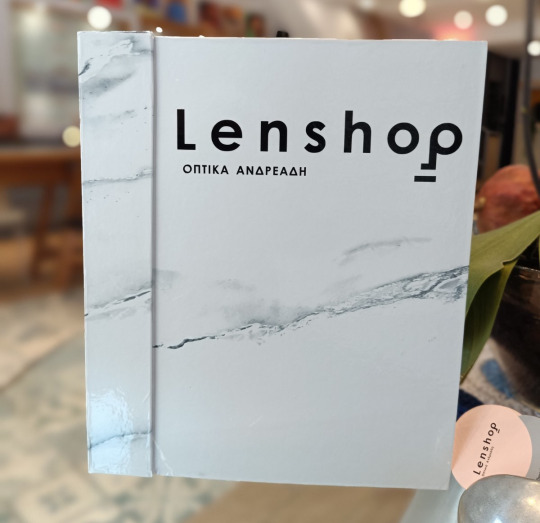
Lenshop creates customer benefits and inspires the world to see things that were invisible before. Lenshop UVO sunglass lenses pass stringent tests to provide the best optical quality and protection for your vision.
It combines the most advanced technologies that protect the lenses and your vision:
- High surface density Process.
For easier and optimal cleaning.
- High resistance Technology.
For greater resistance against dust, scratches and heat.
- Multi-angular Technology.
To reduce reflections whatever the direction of the light
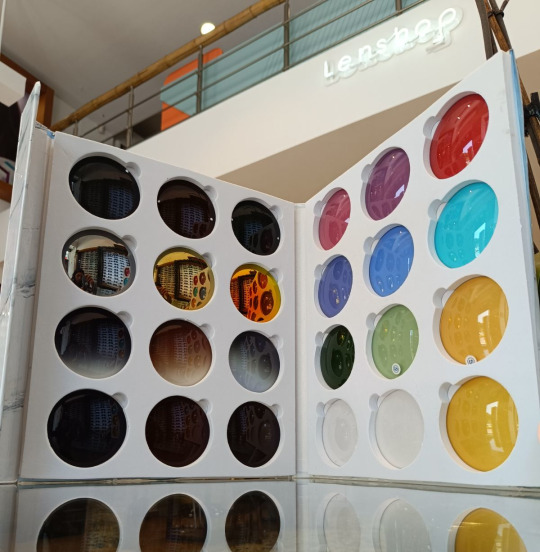
Polarized Technology
Lenshop UVO polarised sun lenses eliminate blinding reflected glare, to offer you greater visual comfort, excellent clarity of vision, better reaction time and improved performance in whatever you do.
Glare can be reflected off many surfaces such as water, glass, grass and metallic surfaces.
Prolonged exposure to glare and sunlight can lead to visual fatigue and discomfort. Glare can also contribute to an increased risk of accidents while driving due to slower reaction time.
Ideal for all activities under the sun, regardless of the environment, situation or season.
ELIMINATES BLINDING GLARE
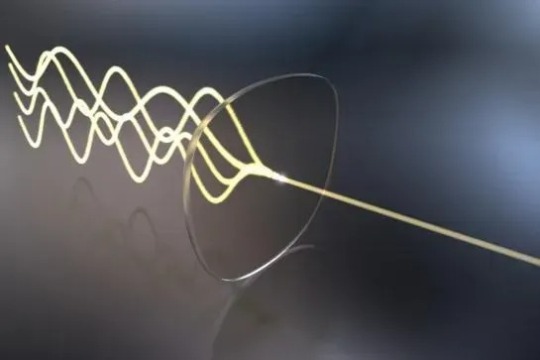
Waves of light travel in many directions. When light waves reflect off of flat surfaces; such as roads, water or ice, it becomes polarised, or is reflected horizontally. This is known as blinding glare, which can be uncomfortable for our eyes. Lenshop UVO technology allows only vertical light through the lens and therefore eliminate blinding glare for optimal visual comfort and enhanced colour perception.
IDEAL FOR DRIVING

Driving is an essential mode of transport for most of us. Lenshop UVO polarized technology enhances daytime driving experience by eliminating blinding glare produced by reflections on wet road surfaces, dashboards and other cars, allowing you to better anticipate changes and hazards on the road.
THE BEST UV PROTECTION WHEN UNDER THE SUN

Lenshop UVO Polarised technology offers the highest level of UV protection within our lens technology range. This makes Lenshop UVO Polarised technology perfect for anyone with light sensitive eyes, for elderly people who have had ocular surgery or anyone looking for comfortable vision when in the sun.
CRYSTAL CLEAR WATER

With Lenshop UVO Polarised, your lens solution can enhance your visual experience when playing water sports and winter sports. Glare from the sun reflected off of surfaces of water, snow and ice are eliminated. Continue doing what you love to do without the inconvenience of blinding glare.
Find the collection in one of our stores
0 notes
Text
Therapeutic Contact Lenses: A "tool" to restore eye health

Contact lenses for many people are a means of correcting their vision, whether they have a distance or near vision problem or a combination of both. Few people know that contact lenses can also be used for therapeutic purposes. Therapeutic lenses are a safe and effective treatment for a wide range of eye disorders or conditions.
What are therapeutic lenses? Therapeutic lenses are essentially no different from common contact lenses that correct any vision problem the user has. But there are specific characteristics that are required for a contact lens to be called therapeutic. As they act as "protective bandages", therapeutic contact lenses are usually made of materials with high oxygen permeability and specific thicknesses and diameters and can be used for daily or prolonged use. They are used for healing the eye, relieving eye pain and protecting the ocular surface. Their main purpose is to restore the integrity of the cornea* while at the same time minimizing the patients' symptoms. The fitting of these therapeutic lenses, whether temporary or as part of a long-term treatment plan, should be considered a medical treatment or procedure and not a lens itself. Finally, therapeutic contact lenses protect the cornea from environmental conditions and deal with the abrasive effects of the patient's own eyelids. Wearing these lenses can help restore corneal tissue, manage pain, and preserve vision. *The cornea is a transparent membrane and anatomically covers 1/6 of the entire eye and is located in the center of the eye

In which cases can they be used? There are many situations in which contact lenses can be used as a therapeutic mean: ● Protection, strengthening and support of the corneal epithelium: They are used as supportive means after surgical operations, refractive surgery operations, corneal transplants while providing relief and immediate healing of the eye. For these conditions, therapeutic contact lenses should be considered a temporary measure until corneal healing is achieved. ● Pain Relief: They are used as a pain reliever in various pathological and traumatic conditions involving the cornea such as bullous keratopathy and filamentous keratitis that can cause severe pain to patients. A patient's quality of life can be significantly improved with the use of therapeutic lenses. ● Improvement of any abnormal surface of the cornea: They provide protection to the surface of the cornea, protecting it from the forces of the eyelids as well as diseases of the eyelids such as trichosis or ectropion where with the movements of the eyelids they can cause abrasions to the cornea. Their use can expedite the healing of the cornea and reduce the risk of infection. ● Corneal healing: They can provide complete healing of the cornea. They have the possibility of being applied in the form of a "pressure bandage" in order to strengthen and prevent the cornea from tearing after injury or even after chemical burns. They can temporarily stop wound drainage after cataract surgery. ● Medicate: They can be used successfully to treat an eye condition with the combined use of contact lenses and medication. Such eye conditions can be neurotrophic keratitis, chemical burns and after corneal transplantation.

But what do therapeutic contact lenses offer? The use of therapeutic lenses in pathological eye conditions helps them to heal faster but at the same time significantly reduces pain. Τhey also prevent the eyelids from interfering with the normal healing of the corneal cells since with every blink the eyelids essentially "scratch" the cornea. In addition to this mechanical protection, therapeutic lenses help to keep the eyes hydrated thereby preventing serious dry eye conditions. Menicon's premiO is a therapeutic contact lens with healing purposes and has superiority both in quality and in the time of accelerating the healing of the epithelium compared to other lenses. It is a product of sophisticated polymerization of hydrophilic monomers (Menisilk), providing high permeability to oxygen, excellent hydrophilicity, resistance to fats and tear proteins and impressive sensitivity due to the sophisticated processing of its surfaces. This particular contact lens has FDA approved for 6 nights of continuous use (even while sleeping). It is mainly used after refractive surgery but also in cornea transplants. Menicon's Bandage lens has an advantage over other corresponding lenses of other companies due to its high hydrophilicity and the large diameters (from 16 to 22mm). It is indicated in a number of eye complications or diseases such as entropion, trichosis, drooping eyelids, bullous keratopathy, corneal abrasion, ulcer or swelling, keratoconjunctivitis where a larger contact lens diameter is required to completely cover the healing point.

Postoperative rehabilitation and follow-up Therapeutic contact lenses have managed to successfully deal with all the problems that can arise post-operatively while offering safety and immediate healing. The use of therapeutic lenses requires special attention, excellent expertise and knowledge, cooperation between optician/optometrist and ophthalmologist in order to assess the patient's needs and choose the most suitable contact lens design. The contact lens will be fitted by an optometrist or ophthalmologist and will be worn continuously until the next appointment. Most people only need the contact lens for a short period of time and so do not need to handle the lens themselves. Occasionally the therapeutic contact lens may need to be fitted on a longer term basis. If this is true, an optometrist can guide the user on the correct procedure for insertion, removal and maintenance. It is critical to carry out frequent follow-ups of patients with therapeutic contact lenses. One reason is that a therapeutic lens fit, by design, shows less movement than a traditional soft lens fit. In addition, it is important for the ophthalmologist to be vigilant in detecting signs of microbial keratitis. The success of application and avoidance of complications is inextricably linked to the patient's full compliance with the instructions for using the lenses as well as their frequent post-operative follow-up. For more information about the use of therapeutic contact lenses, ask the specialized staff at one of our company's stores.
https://lenshop.eu
0 notes
Text
Children's vision tips for school
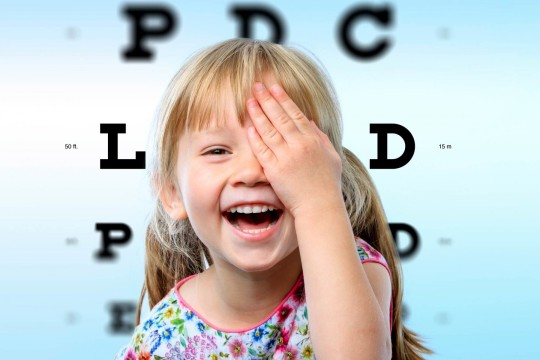
How can we improve the back to school experience for every student across the board?
Good and functional vision requires visual acuity, visual skills and the connection to the visual pathways in the brain to "work" together in harmony.
When this is not the case, even a child who sees 6/6 (perfect visual acuity), may experience difficulties reading, writing and processing visual information, Thus:
• 80% of all information that children receive derives visually.
• 75-90% of learning in a classroom is done visually.
• 80% of children who have difficulty reading have visual impairments that can be treated if necessary with special optometric exercise programs.
Therefore, three areas need to be checked so that parents can be sure that their child's vision will not be an obstacle to their school progress:
1. To be examined by an ophthalmologist that the student's visual system is healthy and that he does not have any refractive problem such as myopia, high hypermetropia, astigmatism.
2. To be checked by a qualified ophthalmologist or optometrist that ocular health, convergence, focus and eye movements are working normally
3. To be checked by a qualified optometrist that the collection of visual information, visual perception, visual memory, visual processing speed and hand-eye coordination are properly developed.
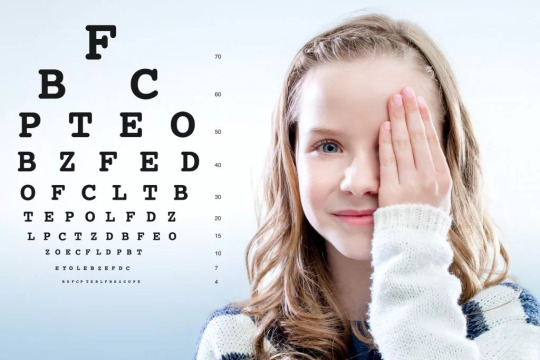
Can we train our eyes to reduce or avoid Myopia as we age?
The simple answer is no, however there are ways of slowing the degree of myopia. Fortunately, science and technology have made leaps and bounds in recent years. For example, a child with myopia of -4.50 dioptres who refuses or is uncomfortable to wear glasses may be suitable for orthokeratology lenses. Commonly referred to as Ortho-K lenses, these are custom made rigid contact lenses deigned to be worn overnight to gently reshape the surface of the cornea, Allowing the wearer to not need contacts or glasses during the day. Upon taking the lenses out in the morning the child can see clearly and cope with any of his activities without having to wear his glasses, while his myopia will remain stagnant or may even recede. It is a treatment that is based on the same principle as braces for the teeth or the guardian for the spine. In fact, in many advanced countries, such as Japan, New Zealand and Australia, the cost of this method is often covered by the health system in cases where patients are considered legally blind (Spheric powers above -5,00 and cylindric powers above -3,00)
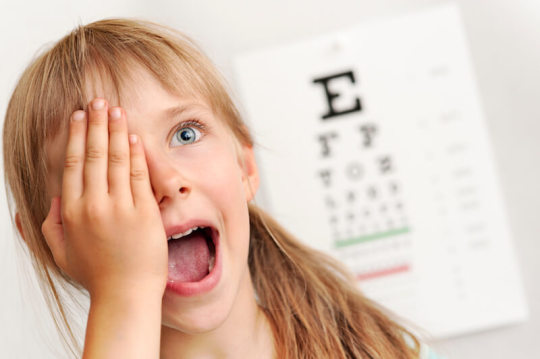
Is innovation the biggest trend in the magical world of glasses?
It sure is. In addition to the orthokeratology we mentioned, there are many more innovations that protect vision or make our everyday life easier. Examples include:
• Glasses that absorb blue light, to which children are constantly exposed by using electronic devices.
• Photochromic glasses that act as dimmers for our eyes. That is, as long as we are exposed to UV radiation (such as solar), the glasses will darken as much as is necessary to protect our eyes.
• Polarized glasses that, in addition to the sun's rays, filter a certain amount of light by cutting reflections, so that we can see without the sun blinding us, which is why we see colors more clearly with polarized glasses.
• Very important for children is the anti-scratch technology, which ensures that the lenses of the glasses are hardened and are not easily scratched like ordinary lenses. They are 6 to 10 times more difficult to etch, so you need to ask for this kind of coating. It is good to ask for a hydrophobic coating (so that water does not stick to the lens), a lipophobic coating (for fingers) and an antistatic coating (so that it does not hold dust) along with hardening. Remember that all quality lenses come with an authenticity card that certifies all of the above and is essentially the identity of the lenses.
• There are also photochromic contact lenses that darken in strong sunlight, so that the user's eyes are not tired of the bright light even when he is not wearing sunglasses.
Your local optician or optometrist will be able to provide you with the best solutions to cater to your main concerns.
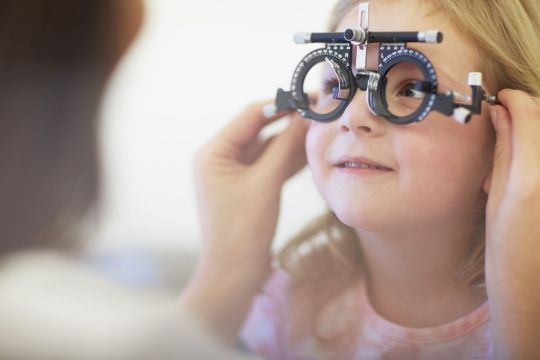
Are glasses an issue of inclusion in the school community and how can this be improved to the maximum?
It is important that the glasses serve the needs of the children, but it is equally important that they do like them. Let them try until they find what expresses them and don't pressure them into their choice. The optician will recommend a frame depending on the child's condition, so that the frame helps the child with his peripheral vision, but not so large that it weighs him down or falls. Fortunately, there are now many companies, designs and colors of frames as well as cute accessories such as special cases, cloths and cords that make this process more enticing to the wearer. So, along with school supplies, bags and cases, put your children's eyeglass accessories on your list.

What are the SOS of the new year?
1. Visit the ophthalmologist (initially) or your local optometrist if there are signs of reading difficulties, refusal to study, slow copying, attention difficulties, etc.
2. Make an appointment at an optical store so you can have available the time your child needs.
3. Make sure that the optical store you choose has certified Optician-Optometrist staff and not simply salesmen only, in order to guide you scientifically based on your child's needs.
4. If the child is in pre-adolescence or adolescence and wants to start with contact lenses, select an Optical store which will be done after studying the trained knowledge and understanding of how to correctly fit and check the ocular health of your childs eyes and who can confidently instruct the insurtion, removal and hygeine maintenance required for all contact lenses.
5. Provide the child with a second pair of glasses, lens cleaner, anti-fog and cloth in their bag.
6. Never give pressure to children to get what parents want. Choose what your kids want to wear, because only then will they wear the glasses even when you're not looking.
Do not hesitate to contact us in order to learn more about all the discussed matters listed above.
https:/lenshop.eu
0 notes
Text
Pupillary Distance - Lenshop
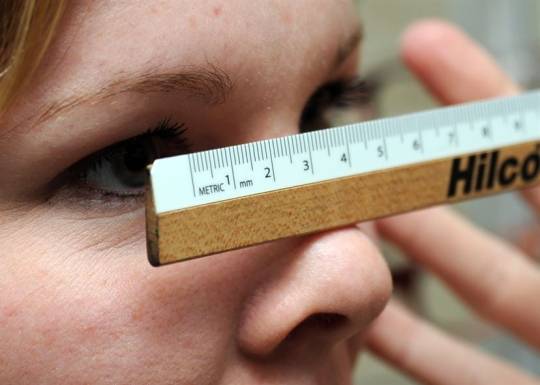
The distance between the two eyes.
You have found the perfect pair of eyeglasses online, but you can't order them because you don't know your pupillary distance, a very important prescription parameter. With the following instructions you can easily measure the distance from home.
What is pupillary distance?
The distance between the two pupils from center to center and it is measured in millimeters.
If you want to order a pair of glasses that are only for near distance and you are over 40 years old use the pupillary distance for near vision, which is easily found if you remove 3mm from the pupillary distance for long vision.

Why is the pupillary distance important in the making of glasses?
Each lens that you place in a pair of eyeglasses has an optical center that is defined by the distance between the two pupils of the eyes.
Calculation of pupillary distance
Your prescription may write your pupillary distance, if not, ask a friend for help or use a mirror to calculate it.
- What you will need: ruler & mirror
- Stand 20cm in front of the mirror
- With your face straight, hold the ruler along your eyebrows
- Close your right eye and place the zero in the center of your left pupil
- Looking straight, close the left eye and open the right
- The millimeters that coincide with the center of the pupil of your right eye is your pupillary distance.
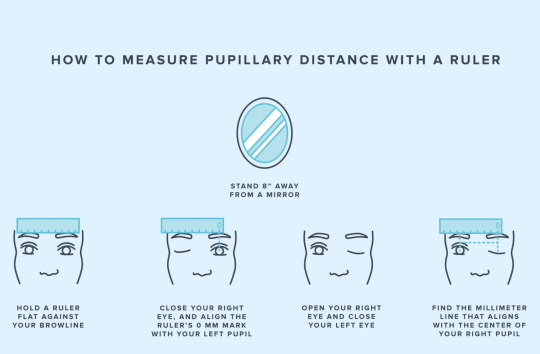
Some additional information
- Measure the pupillary distance 3-4 times to reduce the chance of error
- The range of an adult's pupillary distance ranges from 54mm to 74mm
- The range of a child's pupillary distance ranges from 43mm to 53mm
Using a friend to measure the pupillary distance
If a friend is measuring your pupillary distance, keep both eyes open and hand the ruler to them to place it along your eyebrows and place the zero in the center of one pupil. The pupillary distance is found by reading the millimeters that are above the center of the other pupil of the eye.
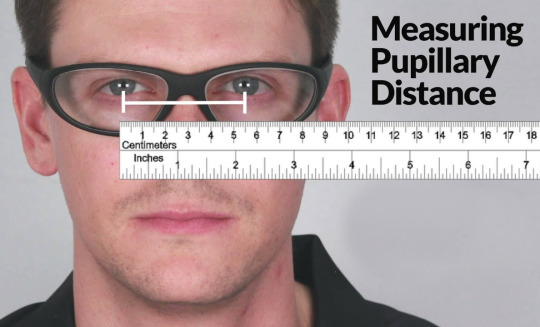
Tips!
- Keep your eyes still as much as possible
- Don't look at the person measuring you
- Focus on an object above his/her head about 3-6 m away
- Make sure during the process that your eyes are at the same height
With the pupillary distance and the correct prescription, you can purchase eyeglasses through a valid online optical store Lenshop.eu, saving time and money.
https://lenshop.eu
0 notes
Text
Barça and Etnia Barcelona launch an exlusive sunglasses collection

The FC Barcelona and Etnia capsule collection being presented on Wednesday comprises seven designs that commemorate both brands’ origins, taking inspiration from the Catalan club’s historic moments
Barça and Etnia Barcelona present a unique collection of luxurious and bespoke sunglasses, which are both inspired by the city of Barcelona and a tribute to the brands’ roots. Presented on Wednesday, the new and exclusive capsule collection of seven different models celebrate their origins, with the designs acknowledging the Catalan club’s heritage and the Mediterranean spirit of an innovative and visionary city with an international outlook. With the launch of this capsule collection, Barça is clearly committing to reach out to new target audiences with links to the world of art and culture.
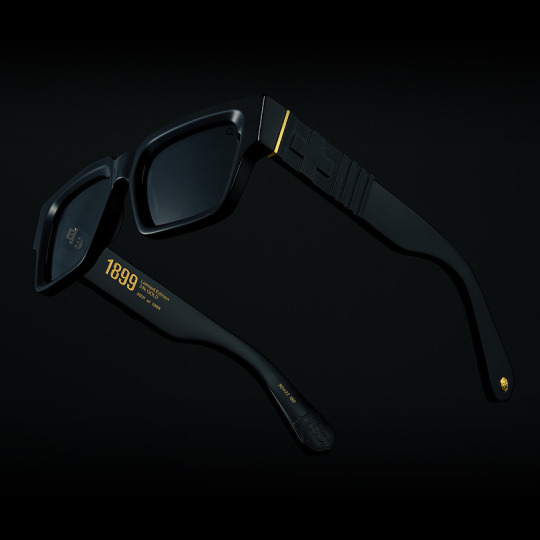
As FC Barcelona is a reference for many artists, and Etnia Barcelona has links to art while remaining true to their DNA, both brands have come together in a contemporary collection. The Dutch painter, Pascal Möhlmann, known for paying homage to the Flemish painter, Van Dyck, and Virgil Abloh, a US fashion designer, also collaborated. Defined as "new beauty" with a 'punk’ attitude, their style is reflected in the campaign’s imagery and the glasses’ packaging, representing the feeling and strength generated by the connection between the Club and its fans around the world.
The collection comprises seven pairs of sunglasses, each with a design containing characteristic elements from the Club and its history. This exclusive capsule collection has two drops that share the same identity and merge a vintage style with contemporary trends. The seven models derived from the collaboration are as follows:
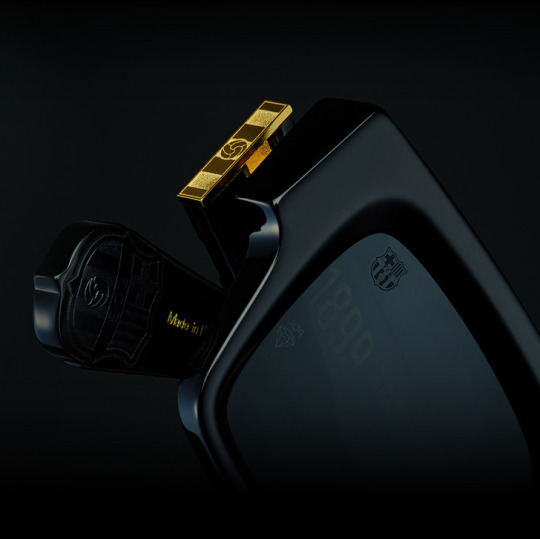
1899 Gold. - Limited edition sunglasses with a deconstructed and recreated Barça crest in the form of an exclusive oversize frame made from top quality materials, like natural black acetate, HD polarized mineral lenses, and finishes in 24 karat gold. Only 1899 units of this unique piece will be available, a number that gives the sunglasses their name, while also referring to the year the Club was founded.
The Colors of our History. – An exclusive collection that celebrates some moments from FC Barcelona’s history. London 1992, Paris 2006, Rome 2009, London 2011, Berlin 2015 and Gothenburg 2021 provide the names for the six sunglasses in this vintage style capsule collection, which commemorates moments from FC Barcelona’s history down the years and the cities in which the men’s and women’s football first teams won the Club’s six Champions League titles. The design is inspired by the colors of the jerseys worn by the Barça players during each of those six victories, and they are manufactured from top quality materials with HD polarized mineral lenses.
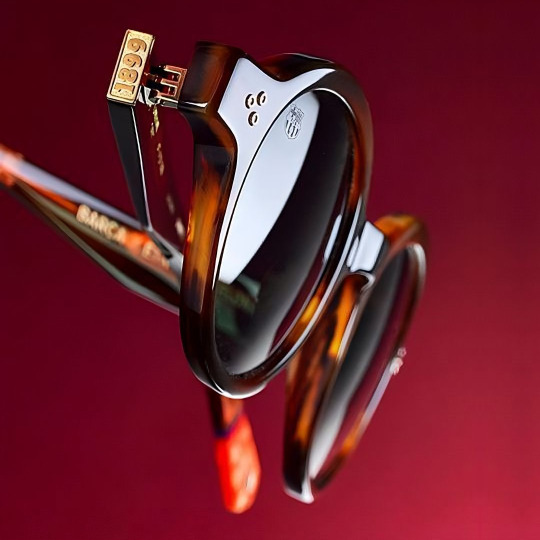
The Barça and Etnia Barcelona capsule collection is manufactured using high quality materials, such as Mazzucchelli acetate and Barberini color HD mineral lenses that give them a unique look in terms of color and quality, in line with the Barcelona brand’s regular range of sun wear collections.
The sunglasses come with an iconic recyclable vegan leather case - black with the Barça shield for the 1899 Gold model, and brown for The Colors of our History drop - complementing the capsule collection’s vintage style. The packaging includes the campaign’s image, created by Pascal Möhlmann, which is also in customized suede, and comes with a postcard containing the illustration and a limited edition card.
Lenshop
1 note
·
View note
Text
Cartier Collections
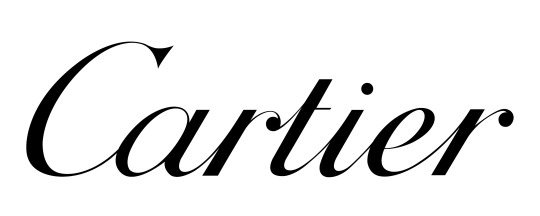
Cartier is arguably the world's most iconic and respected eyewear brand. Despite being a brand that started off with nothing to do with eyewear, that makes it even more amazing that Cartier took all their knowledge and expertise from the world of jewelry and used that to make some of the most beautiful glasses and sunglasses ever created.
Cartier eyewear collection
We are showcasing all the different elements that make Cartier glasses what they are and we are going to be explaining how the different variations within the brand of Cartier exemplify different aspects of the brand's history.
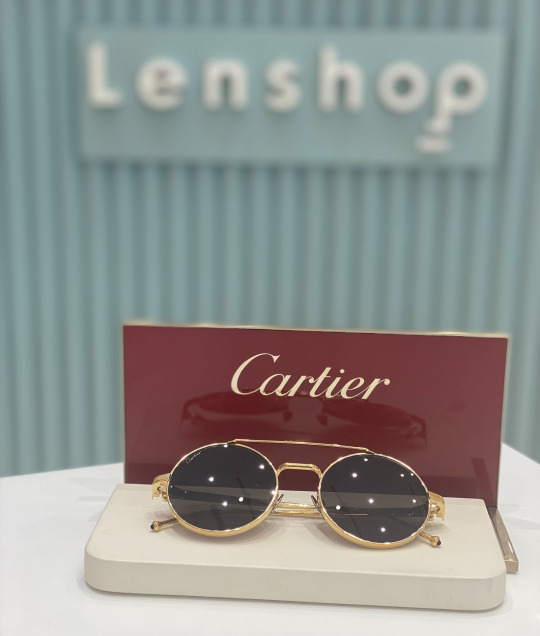
Cartier is the brand that they dream of as their perfect pair of glasses.
So what are the fundamental hallmarks of a pair of Cartier glasses?
In every single Cartier eyewear frame you're going to find either genuine gold or genuine platinum, nothing is painted. It's all plated with precious materials. That means that the longevity of a Cartier frame is so much higher than the longevity of a normal eyeglass frame because normal metal frames are going to chip the paintwork going to peel away because the plating on Cartier frames is done to twice the industry standard for thickness they retain their luminosity for years if not decades.
Τhe most vintage pieces, the ones that are dating back 40-50 years, are what are now known as the Big C

This is the vintage C Cartier and it has the iconic C of the house of Cartier, emblazoned on each arm. These are the most unmistakably Cartier glasses you'll ever find if you really want people to know that you're wearing Cartier. Everybody who buys these, will customize the lens shape and that's one of the awesome things about rimless glasses in general but particularly with Cartier is the element of customization. With the big C complemented with a slight tint on the lens and a larger lens size these just look awesome. They are beautiful because of the real gold plating and we love the way that everything here is just gold.
But there is nowadays a more refined version of this Cartier line and that is the modern C Cartier frames.
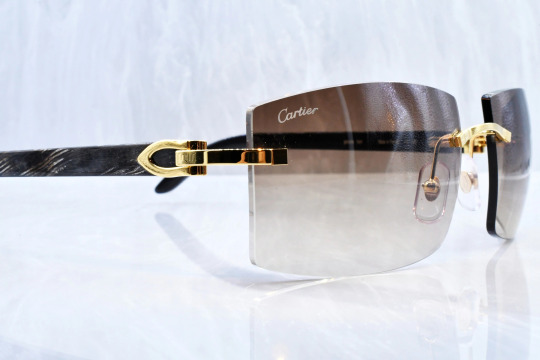
This one in platinum has in our opinion a more subtle C. It's almost like a buckle on the frame you wouldn't necessarily instantly recognize it as the letter C. But for those who know or who are into eyewear or into Cartier or both. They're going to recognize that instantly. This is such a more classy way of implementing a logo rather than just having the word Cartier written along the side as most brands would do. That's one thing that really separates Cartier from other eyewear fashion brands because they're not having to shout about who they are. The beauty is in the item itself. This model also features genuine wood arms and these are the most desirable frames that Cartier make either the wood or the buffalo horn.
You can also get slightly more simplified versions so you can get these C Cartier frames with a slightly smaller c logo and a slightly thinner temple in various different colors
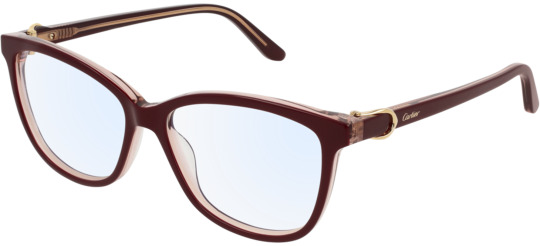
The acetate piece is obviously far less expensive than the buffalo horn and wood pieces so that's good it helps keep the cost down. What we really like with this model is how the C is almost like a buckle that loops through or in fact the temple loops through the buckle of the C. It's a really nice effect; it gives this frame a little bit of three-dimensionality from the side.
Moving on let's focus on a slightly more obscure line from Cartier to break things up a little bit and that is the Trinity de Cartier
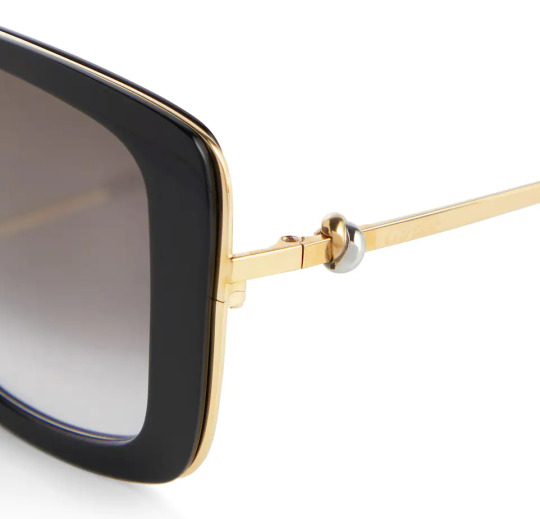
Trinity de Cartier is a feature of a lot of the jewelry that Cartier creates and it's called the Trinity because it will actually fuse three precious metals together platinum gold and rose gold. The thing is that in the jewelry those precious metals are solid whereas when it comes to the eyewear they are plated and apparently we are told that there is not a very consistent or a very healthy i think it i think it's quite a toxic process for creating plated rose gold and therefore they leave the rose gold out of the trinity when it comes to the eyewear. When we heard that story i was kind of sad because it does seem like a little bit of a compromise but having said that i do think that when it comes to the eyewear it is quite beautiful there's that contrast between the gold and the platinum. The trinity line by the way represents love. What you have is the knot which is formed between the two precious metals. That's what signifies the two coming together and that's why it has that role within the Cartier eyewear collection.
One of the traditionally feminine lines within Cartier which has actually now come full circle and worn by men and what ladies equally is the Panthere Cartier line
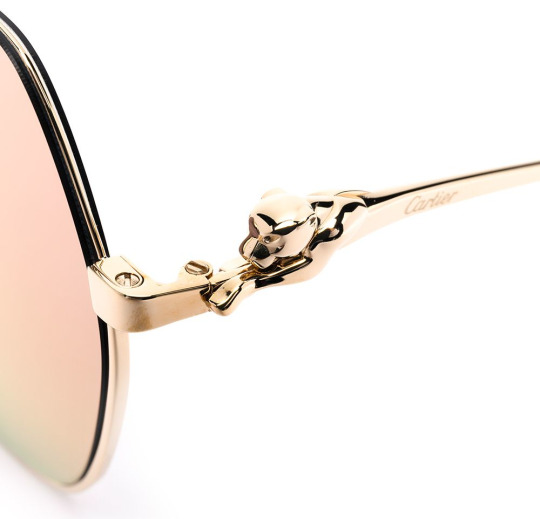
Panthere Cartier is probably our personal favorite section of the Cartier collection. We just love how adventurous it is, like how often are you going to see a panther actually inlaid into you a pair of glasses. It's just not really done by anybody else but we love how Cartier has done it and we particularly love how this one has the full metal sides.
You also have the option of black enamel to represent the panther spots
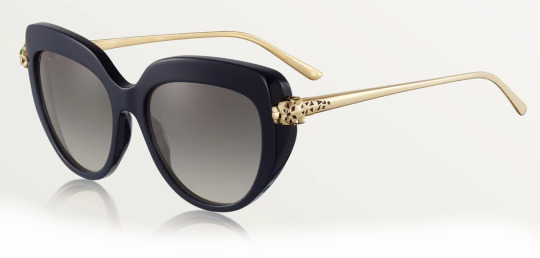
We love how the face of the panther wraps around the front of this frame, it's that little bit more eye-catching that little bit more engaging for people who are going to see you in the glasses and a hell of a lot of craftsmanship has gone into the making of this. That's where Cartier really stands apart from the other eyewear brands. Other eyewear brands might come in nice shapes, they might come in nice colors but you're just not going to see such amazing craftsmanship, such fantastic workmanship as this in almost any other eyewear brand, especially the big mainstream ones.
Cartier truly artisan frames packaged in a huge brand but that's why they have such a cult following because they behave almost like a small scale eyewear brand despite their enormous heritage.
When it comes to sunglasses though our favorite eyewear line within Cartier is the Santos de Cartier
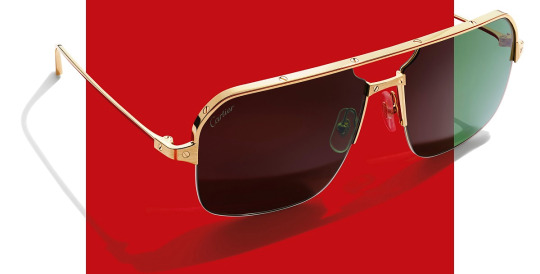
If you are a huge fan of Cartier watches you already know of the most iconic Cartier watch, is the santos de Cartier which features exposed screws along the design. It's a very industrial design and that's carried through into the eyewear, now there are full-frame semi-frame and rimless versions of the santos de Cartier.
By the way Santos de Cartier comes from Santos Dumont who was the world's first aviation pilot. He actually had a watch designed for him by Louis Cartier who created the world's first wristwatch for his use, because when he was controlling his plane he didn't have time to take out a pocket watch and therefore having it on his wrist was a lot easier for him. He asked Louis Cartier to design it for him and he created the world's first wristwatch.
Finally the most modern line within the Cartier eyewear collection are the Premiere de Cartier
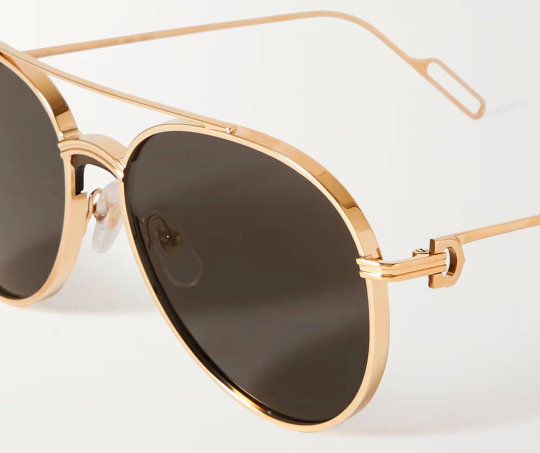
The hallmark of the Premiere de Cartier frames are these ridges which are finished within the temples and the bridge. It just gives the frames a more prominent feel and a more prominent look of course a more dominant style on the face and for people who want to make slightly more of a statement with their eyewear i think this achieves that.
We really hope you've enjoyed this tour of the Cartier eyewear collection. Hopefully giving you some inspiration and some examples to take away and think about which one might be for you.
0 notes
Text
Photochromic lenses and Cataracts

Cataracts develop when the natural lenses of your eyes turn cloudy. They bring inconvenience to your daily life by causing unwanted symptoms like blurry vision, problems seeing at night and a need for frequent changes in your prescription glasses.
Reduce your risk of developing early cataracts with UV protection lenses. If you spend most of your time outdoors but dislike the hassle of swapping glasses when you’re indoors, why not consider getting a pair of photochromic lenses? Not only does it block 100% of harmful UVA and UVB rays, but it protects you from harmful blue light too. Book an appointment with us today to get your pair of photochromic lenses in the right prescription.
https://lenshop.eu/
0 notes
Text
Blue Light - The Good and The Bad
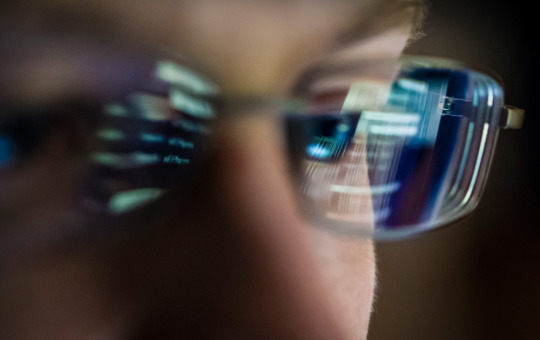
Today we're going to share some important facts about blue light going over what it is, where it comes from, as well as how it can be good for the eyes, bad for the eyes or potentially ugly.
We're gonna go over blue light and these are facts about blue light really what it is where it comes from as well as how it can affect our eyes and our bodies.
Now blue light is part of the visible spectrum of light. That is the light that we can see and perceive and which is inside of the electromagnetic spectrum which is basically all forms of light that even our eyes cannot see that includes things like infrared, light x-rays, gamma rays, your microwaves radio waves, TV waves and then of course UV light.
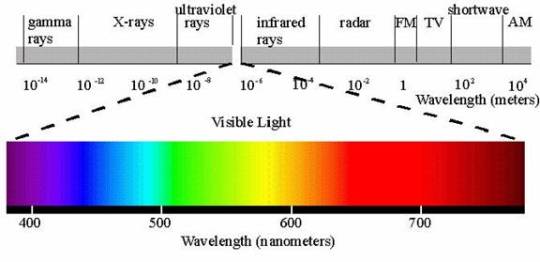
And then we have our visible spectrum which goes from about 400 nanometers of light to about 700 nanometers of light. Within that spectrum between 400 and 500 nanometers of light we call that the kind of blue wavelength light spectrum and even smaller in that section about 400 to 450 nanometers of light that is the high energy visible wavelengths of blue light.
That is the energy of wavelengths that is very close to UV light but this level of blue light penetrates into the eye and can even get to the retina which can potentially be a concern for eye health. As well as our brain health which we will get into momentarily.
Blue light comes from multiple sources most people think of blue light coming from our computer screens and our phones because that is more heavily in the media these days, as we are spending more time in front of these digital screens than ever before. Many people's jobs now are basically working on a computer all day and they're spending like eight plus hours in front of a screen. Even young children in developed countries are going to school and they're using smart boards tablets all day long. And then they come home and do homework again on a computer and yeah they're in front of a screen all day.
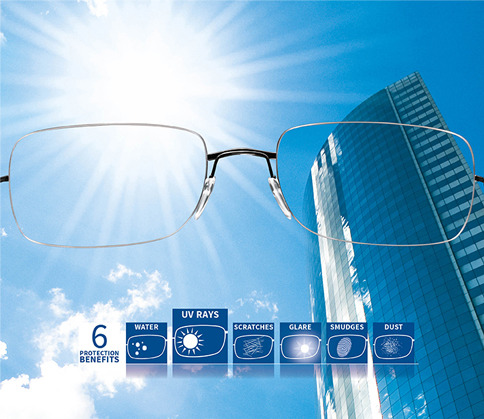
But blue light also comes from other sources including the Sun which is the most major source of all blue light, in fact the reason the sky is blue is because the blue light coming from the Sun and that that light hits different particles in our Earth's atmosphere and then that scatters and again that's why the sky is blue. Even lesser well-known is that blue light also comes from our artificial light sources our indoor lighting which right now a lot of us are spending more time indoors and that means we're exposed to more of this artificial light and this concern about high-energy blue wavelength light being emitted by artificial light sources has been a concern in some countries like France even noted this as a public health concern because we're transitioning to more efficient light bulbs such as LEDs and they emit a lot of harsh high-energy blue wavelength light.
So not only do we need to be concerned about blue light coming from our computer screen but also from the Sun outside as well as indoor lighting. Of course there are concerns about blue light and we're gonna get into those, but first blue light also has some benefits to it. Blue light helps with our alertness especially early in the morning. It's even being used in some light fixtures to help treat certain mood disorders such as seasonal affect disorder. It's even been shown in some studies to help reduce fatigue for veterans who are being treated with this similar type of high-energy light. And blue light kind of like the lights I have here in the background that can affect your memory as well as changing your mood as I find blue light to be very calming and kind of has a tranquilizing effect.
Blue light plays a significant role in regulating our sleep cycles because having a blue light get into the eye and touch certain retinal ganglion cells that activates a certain part of your brain called the pineal gland and can help regulate the release of melatonin the hormone that helps regulate your sleep cycle.

But that also means that blue light can have the bad negative effect especially if you're exposed to too much later in the evenings it could inhibit your melatonin release which is gonna delay your sleep cycles and reduce your chance of having a well rest at night sleep and you're gonna be more fatigued the next day and it even helps inhibit developing good memories which is my concern for especially for young kids who are going to school and trying to learn as they're not developing those memories then they're not going to learn as well.
In addition getting somewhere between seven and eight hours of sleep at night has been shown to help reduce your chances of developing memory loss issues as you get older such as dementia and Alzheimer's.
This is a major concern that I personally have as I have done a lot of Vision Care in senior homes working with the elderly and anybody who's seeing family members go through things like dementia and Alzheimer's,it's not fun and I don't think anybody wants that.
Alongside having reduced amount of sleep cycles due to exposure of blue light there's also a lot of people who are experiencing eye fatigue or digital eye strain also sometimes known as computer vision syndrome from overexposure of this harsh blue light and you may have experienced it yourself while staring at the computer and part of this is believed to be because blue light is scattered again more easily and by staring at the computer screen that extra blue light will scatter and that could even reduce the amount of contrast and you maybe have felt this but looking at a computer screen it seems really sharp and kind of almost too bright and it kind of hurts your eyes a little bit and then maybe you have seen other reading devices such as Kindles have a different type of a background screen which is not as harsh as other computer screens and phones which allows you to have more comfort when reading.
Although the results of study about eye fatigue and blue light are a little bit mixed the vast majority of people who have either reached out to me or have seen me in the clinic usually do report that they feel our eyes are more light-sensitive around blue light sources.
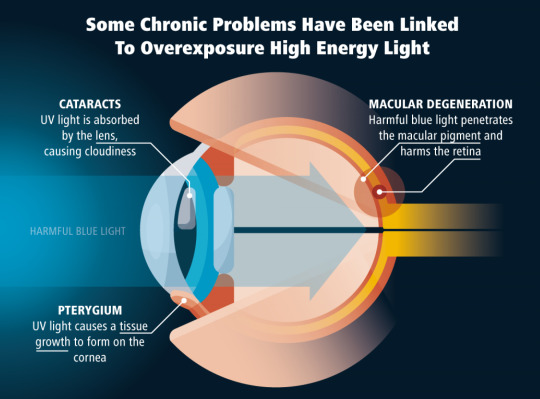
The real ugly concern about blue light has to do with the theories and some studies that suggest that blue light especially that high-energy wavelength visible blue light could cause retinal damage to the back of the eye. This is a kind of a touchy subject for a lot of eye care professionals because there are studies mostly animal studies in done in mass mice and rats that show that the high-energy light can cause damage to these retinal cells and it kind of makes sense that this high-energy light which is very close to UV light which we know UV light from the Sun can cause things like sunburn and skin cancer it can damage ourselves this high-energy light since it passes through and touches the retina that it may pose a risk
There's multiple studies that either show or suggest that this high-energy light increases the amount of metabolic demand on these cells. The retina is already the most metabolically active tissue in the body and if you're adding this really high level of demand on the retina over time that the cellular debris that gets built up through this hell activation of the retina that this cellular debris is going to build up what we call drusen which is a major significant factor for the development of age-related macular degeneration.
Now a big disclaimer I like to give out is that these are done on animal studies mostly rats with high-energy light really close to their face and then there are some studies done on on human retinal cells that have been transplanted to a petri dish and again completed in the laboratory, however the human eye does have defense mechanisms to help protect metabolic changes to the retina, at least when it's not a really high energy source because if you are gonna stare at the Sun or a laser pointer or something with a high amount of energy that can cause burn damage to the retina and we call that solar retinopathy when it's on the Sun.
So do not look in those high-energy light sources but you can understand why these theories and studies have us concerned about blue light. But at that same time just to be fair to everyone epidemiological studies also do show mixed results at best at really for or against that light exposure whether it be from the computer screen or the Sun outside could lead to retinal damage.
https://lenshop.eu
0 notes
Text
ZEISS DriveSafe Lenses One pair of glasses for everyday use and safer driving.

Many people feel insecure, uncomfortable and stressed when driving, especially in difficult light and weather conditions such as rain and mist, or at dusk or night. On average 83% of spectacle lens wearers* also drive. Driving can be a real challenge for everybody – no matter how long the distance, and good vision is vital for safety.
With ZEISS DriveSafe Lenses, ZEISS is introducing a new lens product category for everyday use. It is specifically designed to meet the vision needs of people who want to feel safer and more comfortable when driving with their everyday lenses. ZEISS DriveSafe Lenses are available in both single vision and progressive lens types.
ZEISS developed an everyday lens solution consisting of three elements to make driving safer and more comfortable.
Luminance Design® Technology by ZEISS takes into account the pupil size in low-light conditions
ZEISS DuraVision DriveSafe Coating reduces perceived glare.
ZEISS DriveSafe Lens Design incorporates an up to 43% larger mid-distance zone for easier focus switching between the dashboard and mirrors. And up to 14% larger far-distance vision zone for a wider view of the road.
The benefits for the wearer
One pair of glasses for everyday use and safer driving:
Better vision in low light conditions for safer and more comfortable driving
Reduced glare at night from oncoming cars or street lights
Accurate vision of the road, dashboard, rear-view mirror and side mirrors
https://lenshop.eu
youtube
0 notes
Text
Children Vision

Did you know eye disorders are the most common long-term health problems for children, along with allergies and asthma? Good vision is important for a child’s educational, physical and social development.
With many children suffering from an undetected vision problem, it’s important to be aware of the signs to give every child the best chance of reaching their full potential.
How to spot the problem
Many children aren’t aware they have a vision problem and will generally try to adapt, without knowing they could see better. As a parent, you’re the best person to help find the signs.
Children who are struggling with undetected vision problems often fail to progress well in school. You can use the following checklist to look for the common symptoms that children with vision problems exhibit.
- One eye turns in or out while the other points straight ahead - Frequent blinking - Red or watery eyes - Difficulty concentrating - Covering or closing one eye - Holding a book very close to read - Squinting or sitting very close when watching television - Complaints of headaches - Complaints of blurred or double vision.
If your child displays any of these symptoms, we suggest that you visit or contact your local Lenshop Optometrist as soon as you can.
https://lenshop.eu
0 notes
Text
Ray-Ban Ferrari Scuderia

Inspired by the world of Formula 1, the Ray-Ban Ferrari Men's Sunglasses exude all the competitive passion of the track to create a unique and distinctive look.

With their sinuous and decisive lines, the Ferrari Ray-Bans were made for the man who lives and breathes competition and designed to highlight the perfect coupling of Scuderia and speed on the track.

From the limited edition frames celebrating the legendary F1 Gran Prix tracks to the ultramodern look of the Ferrari Men's Ray-Bans, these sunglasses were designed with all the conceptual layers that go into the design of the Ferrari F1 car: an absolute must-have for any Maranello fanatic.

https://lenshop.eu
0 notes
Text
Titanflex Eyewear: Smarter, Tougher, Lighter

TITANFLEX revolutionised the glasses market in 1988 – and these innovative glasses are still considered the best quality memory titanium glasses on the market today.
- Flexible in all situations

Titaflex material combinations are ten times as flexible as conventional spring steel.
- Higher durebility for everyday use
Titanflex glasses are ready for top performance, something you may be glad of after casually putting your glasses into your jacket or accidentally sitting on them. Pure titanium is one of the ten most frequent elements found in the earth’s crust, and yet its extraction is complicated. The mineral has to be exposed to various chemical processes in order to obtain the metal. Only complex processes make this material so valuable.
- Light as a feather
Glasses are up to one third lighter than conventional frames. You will notice this as soon as you hold them in your hands.
- Memory effect

After deformation, your glasses return to their original form. Not just once - always. This ensures than your glasses will fit comfortably at all times. Memory titanium alloys have resulted from in-depth research, conducted for example by the NASA or the US Navy. The shape memory alloy is for example used in aerospace applications, in ship-building, in medical technology or in robot technology. In addition, researchers are constantly developing new areas of application, in particular regarding revolutionary future technologies.
- Precisely formed for a perfect fit
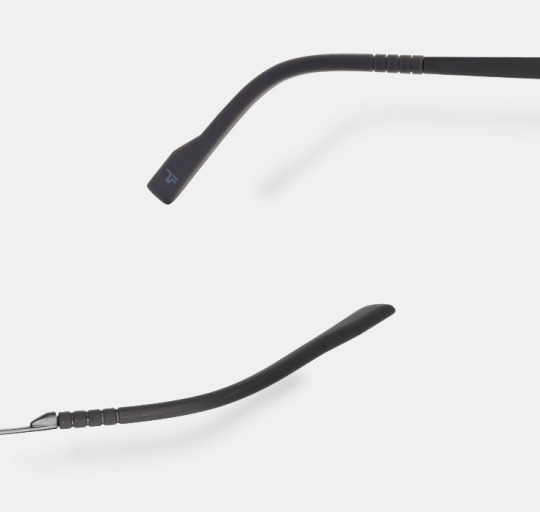
Your Titanflex glasses can be adapted perfectly to your head shape. Here the correct fitting pressure is not generated be bending the hinges, but far more accurately via the material itself.
High-quality glasses made from memory titanium and bearing the name TITANFLEX have always been generated through engineering artwork and design competence. For this purpose, the base material is subjected to a stringently-inspected thermomechanical treatment and refinement process. The selection of the material processed in combination with TITANFLEX also influences the high quality.

TITANFLEX glasses frames are designed, constructed and developed in Nuremberg (Germany). The designers orientate themselves on the company’s long-standing experience values, as ESCHENBACH has conducted intensive research and development into anatomy and wearing behaviour for decades. Only the best of all the prototypes tested are christened with the name TITANFLEX and actually reach the optician’s store. The glasses are produced to 80 % in manual craftsmanship by certified manufacturers in order to guarantee the high quality of the original.
Optical frames delight wearers through their high level of comfort, but also through their timelessly modern style. Intelligent material combinations permit designs worth seeing.

These spectacles boast a unique combination so perfect for them, it’s as if it was created specially for modern, technically sophisticated glasses. Liquidmetal is a new, very flexible high-tech material whose glasslike structure makes it remarkably resistant and elastic, and the unique finish gives the glasses a brilliant surface and means completely new design options are possible. It is strong like titanium, scratch-resistant, rustproof and extremely hard. The first collection here is starting with three models which impress with classy looks, a pleasant feel and three-dimensional arms.
These new biker-style helmet glasses have been designed to fit inside any motorcycle helmet perfectly. Designed by people who are avid motorcyclists themselves, the two models were not only developed with great passion, but also underwent extensive testing. Straight, ergonomic arms made of proven TITANFLEX material makes the glasses comfortable to wear and easy to put on and take off, while a classic rectangular shape and pilot lenses with a dynamic, two-colour design give the frames a trendy biker look that is actually far too cool to hide behind a visor.

Thanks to its delicate metal frame and transparent hi-tech plastic, the TITANFLEX skeleton design stands out because of its simplicity. A combination of reduced, matt plastic colours and metal parts whose finishes range from glossy to semi-matt gives the spectacles a modern nude look and offers an insight into the unique quality and precision they have been made with. The shape of the glasses is also ultra-modern and yet timeless: It is basically a young, urban interpretation of the classic rectangular design coupled with a trendy double-bridged panto shape.
Titanflex in Lenshop
0 notes
Text
8 tips for healthy Eyes. Look, See and Feel Better

1. Schedule eye exams for your whole family. A comprehensive eye exam can detect serious problems, like diabetes, before you even know they exist.
2. Wear sunglasses to protect your eyes from the sun's UV rays, which can be dangerous even on cloudy days.
3. Rest your eyes once every 20 minutes for 20 seconds while working at a computer or using a digital device, to help prevent eye strain.
4. If you smoke, quit! Smoking increases your risk of cataracts and sight-threatening eye diseases.
5. Be active. Regular exercise can delay the onset of age-related macular degeneration (the leading cause of permanent vision loss later in life)
6. Wear safety goggles during sports and any activities that pose a risk for your eyes. An estimated 2.4 million eye injuries will occur in 2014 and 90% of them can be avoided with protective eyewear.
7. Eat your greens. A diet rich in fruits, leafy greens and omega-3 fatty acids can help reduce your risk of dry eyes, macular degeneration, glaucoma and more.
8. Drink lots of water. Without enough water, you can't produce enough tears to keep your eyes moist and nourished.
https://lenshop.eu
0 notes
Text
8 tips for healthy eyes: Look, see and feel better!

1. Be active Regular exersice can delay the onset of age-related macular degeneration (the leading cause of permanent vision loss later in life).
2. Schedule eye exams for your whole family A comprehensive eye exam can detect serious problems, like diabetes, before you even know they exist.
3. Wear sunglasses to prorect your eyes from the sun's UV rays, which can be dangerous even on cloudy days.
4. Rest your eyes once every 20 minutes for 20 seconds while on your cell phone, tablet or computer, to help prevent eye strain.
5. Eat your greens A diet rich in fruits, leafy greens and omega-3 fatty acids can help reduce your risk of dry eyes, macular degeneration, glaucoma and more.
6. If you smoke, quit! Smoking increases your risk of cataracats and sight-threatening eye diseases.
7. Wear safety goggles An estimated 2.4 million eye injuries occur in the United States each year and 90 percent of them can be avoided with protective eyewear.
8. Drink lots of water Without enough water, you can't produce enough tears to keep your eyes moist and nourished.
https://lenshop.eu
0 notes